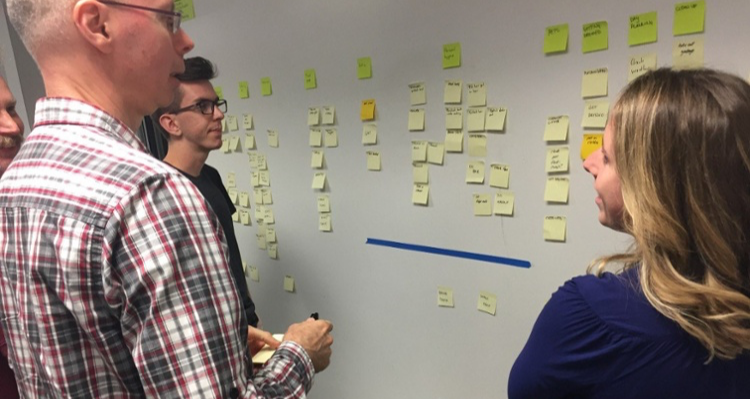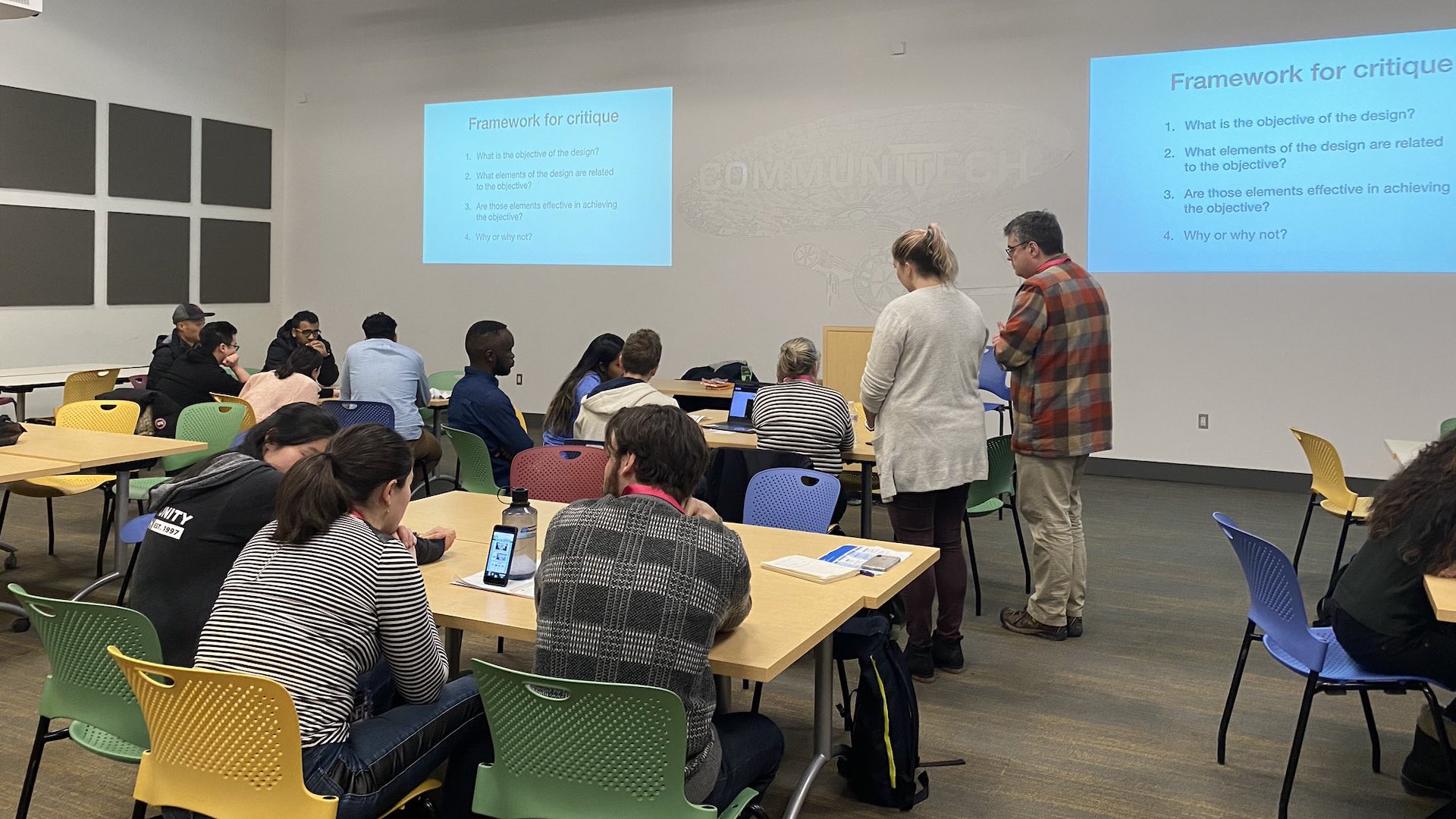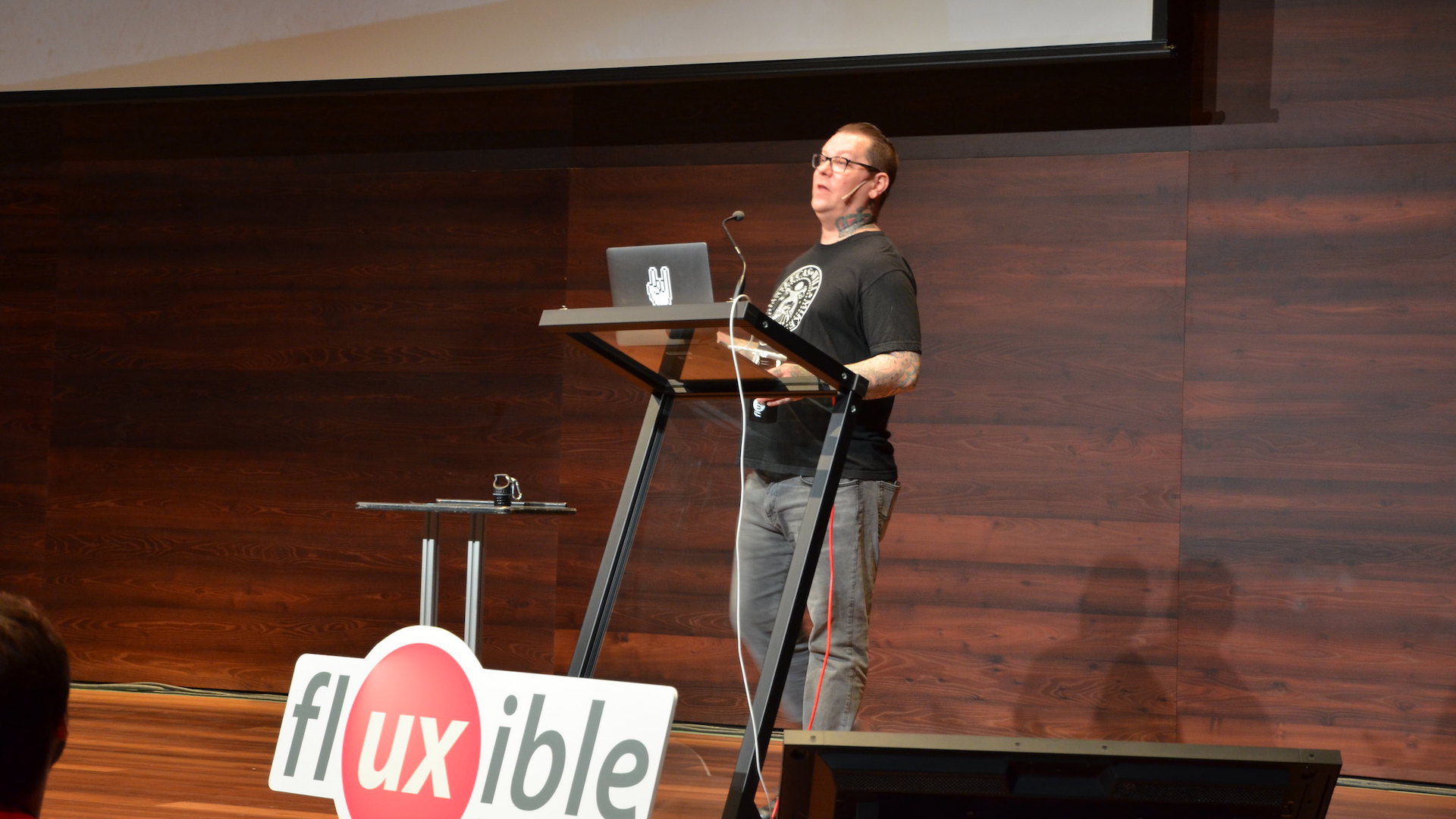Remote work is largely a way of life now, but before COVID-19 compelled us to physically distance from each other we often worked with remote and distributed teams at Zeitspace.
Most of our client work is tightly integrated with people from all over the globe, so we learned how to use tools to bridge both distance and time zones. When it comes to project work, we use cloud-based tools by Atlassian, Linear, and Github. We also tap into cloud-based platforms, such as Adobe XD and Miro for design work. Zeitspace user experience designer Megan Pollock has used Miro for capturing user story mapping results, value proposition canvasses, and workflow collaboration.
We see great value in running retrospectives, so we use Retrospective Dashboard, an interactive white board that gives us the power of sticky notes in the cloud.
And, of course, we’re heavy users of Slack, which allows us to have quick and easy conversations — both through brief texts and in-app calling and screen sharing — when needed.
So it seemed like a natural extension to put together a remote user story mapping workshop for our next Zeitspace Session. Zeitspace partner Mark Connolly has run this workshop twice before as a Zeitspace Session, as well as run user story mapping workshops for Google and Communitech, but this is the first time we’re focusing on how to do user story mapping remotely.
User story mapping is a technique Jeff Patton describes in his book User Story Mapping: Discover the Whole Story, Build the Right Product. It's a way for UX designers, product managers, and other stakeholders to develop and document a shared understanding of their users and their needs rather than specific features. We use it extensively at Zeitspace as a way to kick off projects and get everyone on the same page about the challenge ahead.
Normally user story mapping is a physical activity and involves people moving sticky notes around in a room while sharing insights along the way. But with physical distancing we’ve had to rethink how to harness the powerful insights we get from user story mapping in a remote environment.
The pandemic hasn’t changed the need for user story mapping, says Connolly.
User story mapping is still relevant because its intent is to get a shared understanding of the problem and how to solve it, he says. The stories in user story mapping are the stories that the people are telling each other as they engage in story mapping.
“That need hasn’t gone away and doing it remotely is the way it needs to get done,” says Connolly.
For those not familiar with user story mapping, Connolly says some are skeptical about what will come from the session. But there are always insights.
“The biggest surprise is what people learn from everyone that they didn’t previously know, or at least there wasn’t a shared understanding,” he says. “I have not yet been in one of these things where there wasn’t a new insight that emerged, and sometimes they’re substantial.”
Steve Currie, CEO of Best Athletes, a sports analytics platform that analyzes athlete and coach performance data, got to see those insights emerge when Zeitspace ran a user story mapping session for the start up last year.
“By having Zeitspace help us with this, it created a dynamic on the team to explore what everyone was thinking and provide a rationale for why we thought customers would behave a certain way at each step on the journey,” says Currie.
“It’s a great way to get everybody on the same page. It was quick and efficient to work through and we were able to get consensus quickly with the key people involved. It made it easier to move forward.”
One of the greatest benefits of user story mapping isn’t just the facilitator providing you with a framework, says Currie, but their skill around asking the right questions that pull out information in a useful way. Applying that in a lean environment is really critical, he says.
Zeitspace holds monthly learning hands-on workshops, called Zeitspace Sessions, to share our knowledge with the community. The sessions are free, but we often cap registrations so that participants can engage with the content in a meaningful way.
Registration for the user story mapping workshop is now open.





